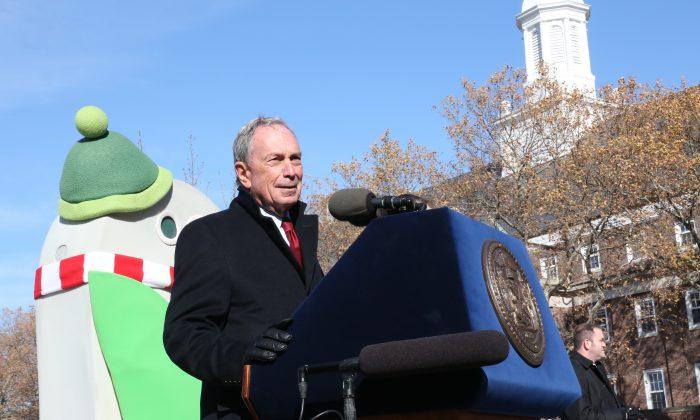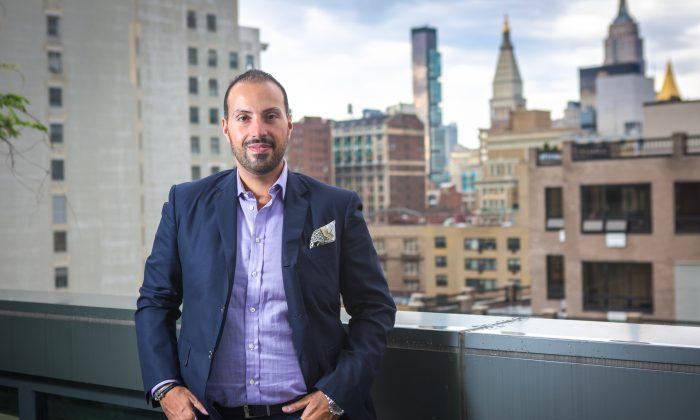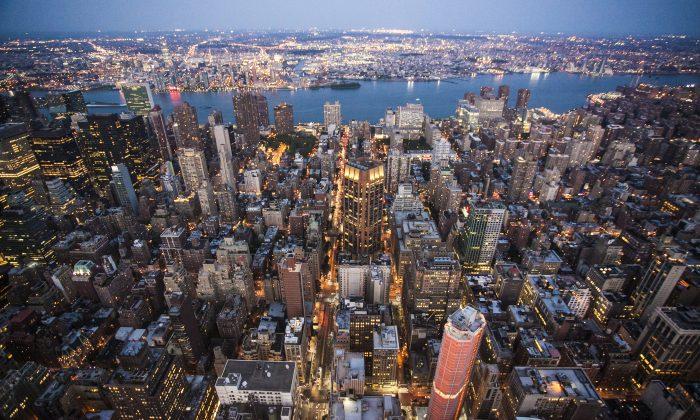NEW YORK—When the millionth tree is planted as part of one of the city’s many long-term sustainability projects, Mayor Michael Bloomberg’s term will already be over, but more than 100 environmental initiatives he helped launch will still be moving forward.
Bloomberg’s long-term sustainability plan, PlaNYC, consists of 132 initiatives with specific goals and timelines. For MillionTreesNYC the goal is 1 million new trees planted in the five boroughs by 2017. Bloomberg, who planted the 800,000th tree on Governors Island Thursday, said that goal will be reached two years early.
Since he won’t be in office, Bloomberg suggested that actress Bette Midler plant the last tree. Midler is the founder of the nonprofit New York Restoration Project, which is the city’s private-sector partner in the venture.
“It has been a great honor to partner with this administration and the Department of Parks and Recreation to forge this historic green legacy for our city,” said Amy Freitag, executive director of New York Restoration Project.
Bloomberg’s other environmental initiatives are also making measurable progress.
Water
Bloomberg’s administration has invested more than $10 billion since 2002 in improving the water delivery system in New York, to ensure that the city will have enough water as the population continues to grow.
The city had a hand in financing the recently completed $1.5 billion Catskill/Delaware Ultraviolet Disinfection Facility, which is the world’s largest ultraviolet treatment plant. The plant can treat more than 2 billion gallons of drinking water a day, which is then consumed by New York City residents and a million residents in upstate counties.
The $3.2 billion Croton Water Filtration Plant in the Bronx is also being tested. The plant will allow the city to supply as much as 300 million gallons of clean drinking water each day from the Croton Watershed for the first time in more than a decade.
Recycling Programs
In 2006, Bloomberg created GrowNYC’s Office of Recycling Outreach and Education to promote recycling to the public, with the goal of diverting more waste from disposal.
Earlier this year, yogurt and other containers were added to the types of plastics that the public can put out to recycle.
Food waste recycling pilot programs are underway in several high-rise apartment buildings in Manhattan, and some neighborhoods in Brooklyn and the Bronx. The plan is to add additional communities to the program in all five boroughs and to reach more than 100,000 households next year.
The city hopes to double the recycling rate of solid waste to 30 percent by 2017.
Air Quality
In 2010, almost 10,000 buildings in New York City burned two types of heating oil that emit significant amounts of soot, sulfur dioxide, nickel, and other pollutants.
Through the PlaNYC Clean Heat Program, since 2011, more than 2,700 buildings have converted to cleaner fuels. An additional 2,500 buildings are in the process of making conversions, according to the mayor’s office.
New York City’s air quality is the cleanest it has been in more than 50 years. Since 2008, the levels of sulfur dioxide in the air have dropped 69 percent, and since 2007 the level of soot pollution has dropped by 23 percent.
“In 2007, our PlaNYC agenda set an ambitious goal of having the cleanest air among the largest U.S. cities,” Bloomberg said. “We have already made major progress toward that goal, which is saving lives and improving the health of New Yorkers.”
Bloomberg said the cleaner air has meant 800 fewer deaths and 2,000 fewer emergency room visits from lung and cardiovascular diseases annually, compared with 2008.






Friends Read Free